B-Myb deficiency boosts bortezomib-induced immunogenic cell death in colorectal cancer
- PMID: 38565963
- PMCID: PMC10987531
- DOI: 10.1038/s41598-024-58424-w
B-Myb deficiency boosts bortezomib-induced immunogenic cell death in colorectal cancer
Abstract
B-Myb has received considerable attention for its critical tumorigenic function of supporting DNA repair. However, its modulatory effects on chemotherapy and immunotherapy have rarely been reported in colorectal cancer. Bortezomib (BTZ) is a novel compound with chemotherapeutic and immunotherapeutic effects, but it fails to work in colorectal cancer with high B-Myb expression. The present study was designed to investigate whether B-Myb deletion in colorectal cancer could potentiate the immune efficacy of BTZ against colorectal cancer and to clarify the underlying mechanism. Stable B-Myb knockdown was induced in colorectal cancer cells, which increased apoptosis of the cancer cells relative to the control group in vitro and in vivo. We found that BTZ exhibited more favourable efficacy in B-Myb-defective colorectal cancer cells and tumor-bearing mice. BTZ treatment led to differential expression of genes enriched in the p53 signaling pathway promoted more powerful downstream DNA damage, and arrested cell cycle in B-Myb-defective colorectal cancer. In contrast, recovery of B-Myb in B-Myb-defective colorectal cancer cells abated BTZ-related DNA damage, cell cycle arrest, and anticancer efficacy. Moreover, BTZ promoted DNA damage-associated enhancement of immunogenicity, as indicated by potentiated expression of HMGB1 and HSP90 in B-Myb-defective cells, thereby driving M1 polarization of macrophages. Collectively, B-Myb deletion in colorectal cancer facilitates the immunogenic death of cancer cells, thereby further promoting the immune efficacy of BTZ by amplifying DNA damage. The present work provides an effective molecular target for colorectal cancer immunotherapy with BTZ.
Keywords: B-Myb (MYBL2); Bioinformatics; Bortezomib (BTZ); DNA damage; Immunogenic death (ICD); Macrophages.
© 2024. The Author(s).
Conflict of interest statement
The authors declare no competing interests.
Figures

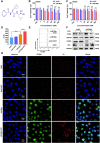
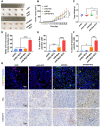
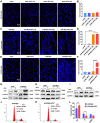
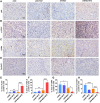
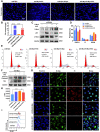
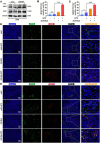

Similar articles
-
Suppression of NRF2 by photodynamic action to enhance bortezomib-triggered DNA damage for synergistic colorectal cancer therapy.J Photochem Photobiol B. 2025 Jun;267:113162. doi: 10.1016/j.jphotobiol.2025.113162. Epub 2025 Apr 3. J Photochem Photobiol B. 2025. PMID: 40199069
-
Combined bortezomib-based chemotherapy and p53 gene therapy using hollow mesoporous silica nanospheres for p53 mutant non-small cell lung cancer treatment.Biomater Sci. 2016 Dec 20;5(1):77-88. doi: 10.1039/c6bm00449k. Biomater Sci. 2016. PMID: 27822577
-
The Effect of Phase Transition Temperature on Therapeutic Efficacy of Liposomal Bortezomib.Anticancer Agents Med Chem. 2020;20(6):700-708. doi: 10.2174/1871520620666200101150640. Anticancer Agents Med Chem. 2020. PMID: 31893998
-
BCMA-targeted bortezomib nanotherapy improves therapeutic efficacy, overcomes resistance, and modulates the immune microenvironment in multiple myeloma.Blood Cancer J. 2023 Dec 11;13(1):184. doi: 10.1038/s41408-023-00955-y. Blood Cancer J. 2023. PMID: 38072962 Free PMC article.
-
Progress on the Application of Bortezomib and Bortezomib-Based Nanoformulations.Biomolecules. 2021 Dec 30;12(1):51. doi: 10.3390/biom12010051. Biomolecules. 2021. PMID: 35053199 Free PMC article. Review.
Cited by
-
Elucidating DNA Damage-Dependent Immune System Activation.Int J Mol Sci. 2025 Jun 18;26(12):5849. doi: 10.3390/ijms26125849. Int J Mol Sci. 2025. PMID: 40565309 Free PMC article. Review.
References
MeSH terms
Substances
Grants and funding
LinkOut - more resources
Full Text Sources
Medical
Research Materials
Miscellaneous

